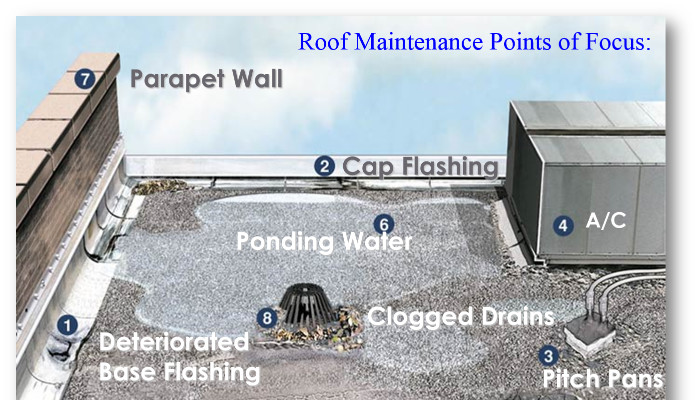
Roof Maintenance: Protect Your Asset
“Well, you know – out of sight, out of mind!” This statement is usually made as an innocent joke – most often while admitting to having procrastinated about something – and generally about matters not too serious. However, with another hurricane season approaching, I assure you that your roof system is no laughing matter. Sure, you may have a fantastic insurance company, but the greatest losses through a hurricane are often those little things that are not covered by insurance – such as precious, priceless, memorabilia – and for things that insurance does cover, it can take months to be reimbursed for issues that need to be handled immediately. Even if you have a relatively new roof system, it is for good reason that manufacturers insist (in the fine print of their warranties) that a regular, proactive maintenance program be put into place from the point of installation. Not only that, but you can consider your warranty null and void should a hurricane come through – particularly if it failed due to neglect.
There are, however, a multitude of ways that building owners, boards, and managers can take action to minimize loss and maximize the likelihood of being left standing with a roof over their head (pun intended) should a hurricane bore through our region this coming season.
1. First off, you should already have a proactive maintenance plan in place to protect your warranty and stay on top of those little things that could become potential leaks. If so, go back through your original assessments and previous reports and take note of any trends. Ask yourself these questions:
a.) Have any of your conditions gone from a “Good” rating to an “Average”, “Fair”, or even “Poor” rating?
b.) Has your life expectancy decreased at a rate greater than expected?
c.) Has your roofing contractor given you budget numbers for restoration as well as a replacement?
d.) Have the same types of repairs been performed in many different areas throughout your roof system since you began documenting your maintenance?
All of these are warning signs that the condition of your roof system is deteriorating, and it may require more extensive repair options to “bring it up to par” – as a roof is more likely to survive extreme conditions. Consult with your roof service contractor to discuss these trends and current recommendations.
2. If you do NOT have a proactive roof maintenance plan in place, requesting a proposal for such a service is a great way to get an updated assessment of your current roof condition. Most roofing contractors don’t charge for this initial assessment as they consider it time well invested to earn the opportunity to do business with you. That assessment is going to give you a whole lot of information as it relates to the questions above.
a.) If you know the age of your roof system, the rating level is going to give you a good idea of how your system compares to other roof systems of the same age. Perhaps it has undergone excessive abuse from a major A/C overhaul, lack of maintenance, UV exposure, previous storms, or even improper installation or prematurely failing material.
b.) Without knowing the precise age of the roof system, Life Expectancies are based on the professional experience of the surveyor. He takes into consideration the typical warranty coverage for that type of system as well as the realistic expectations for that type of system in this particular region to come up with his number. For any of the above reasons, this could increase or decrease as compared to roof systems of the same age. And although mostly projected for the sake of budgeting reserves, it can also be an eye-opener for many who have just obtained a property, may not have knowledge of its history, or may not have been given accurate information as to its true existing condition upon turnover.
c.) The number one threat to your roof system here in Florida is the sun’s ultraviolet light (UV). Where there are missing granules, worn topcoats, or porous single-ply membranes with exposed fibers, the main waterproofing element of your roof system and its tensile strength are at risk of failure. A qualified roof professional will be able to tell you whether or not your system qualifies for restoration, or if it has exceeded that point. If a roofing contractor recommends restoring the roof surface in 1-3 years, don’t automatically assume you have 3 years to coat the roof. This projection is meant to allow you time to accrue funds if need be. There is already an evident need, and depending upon the harshness of each rainy season thereafter, a very costly complete roof replacement may soon become your only option.
d.) Lastly, continued maintenance repairs of the same type not only suggest that your problems will continue, but that they will likely worsen. Rather than continue trying to stay ahead of leaks a little bit at a time and dealing with more major leaks before your next service, you may want to ask your roof service provider for a more substantial proposal to provide a complete overhaul of these details throughout the entire roof system.
So there you have it! There are no more excuses to procrastinate, and assumptions are precisely that. Your roof system is an ASSET to your operation. As with any business, your assets can EARN you money by SAVING money if they are properly managed, or they can drive your finances into the ground through frugality and neglect.

